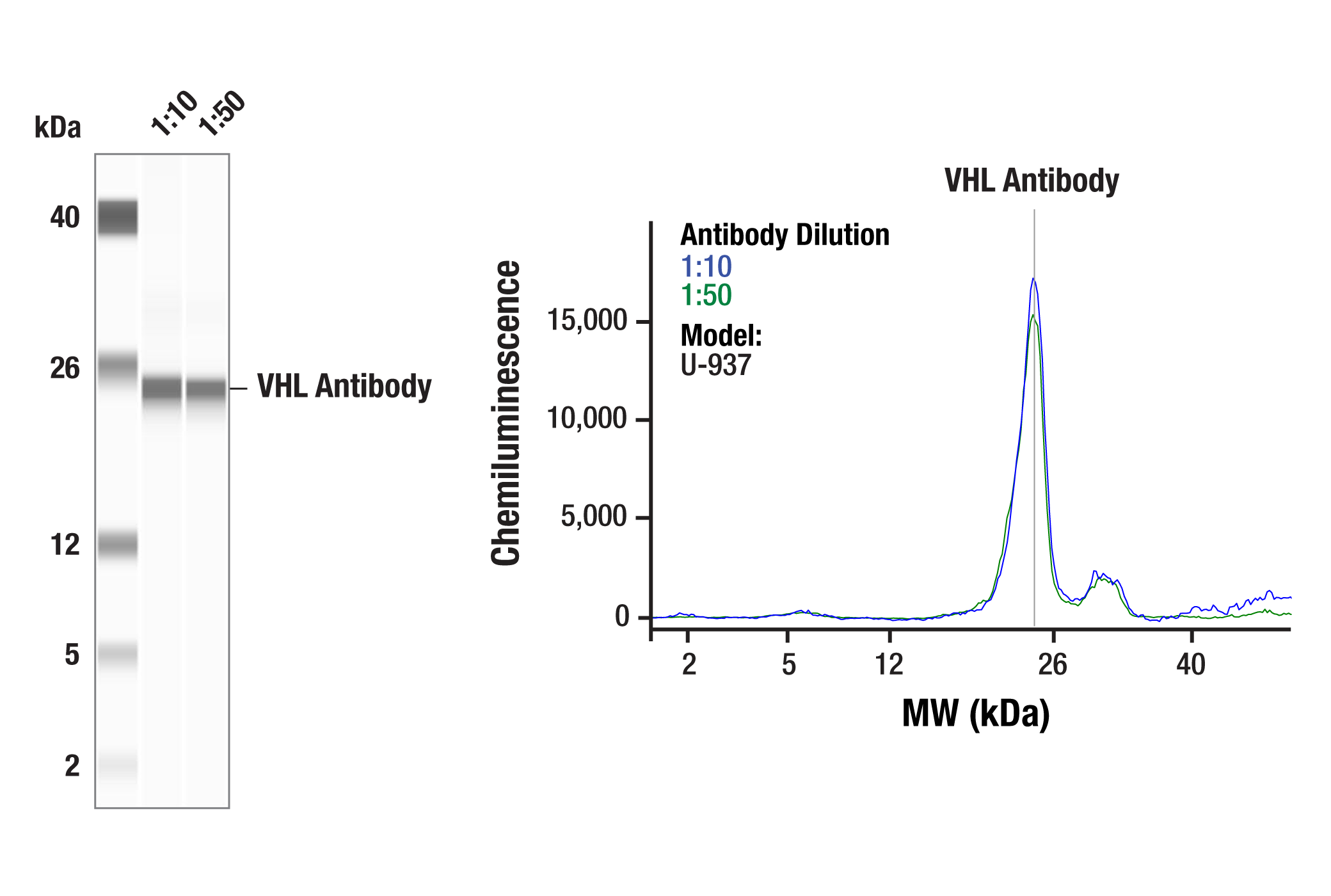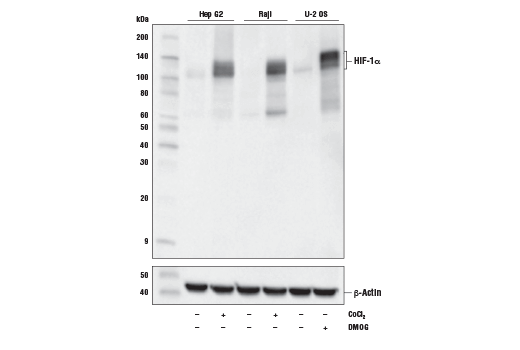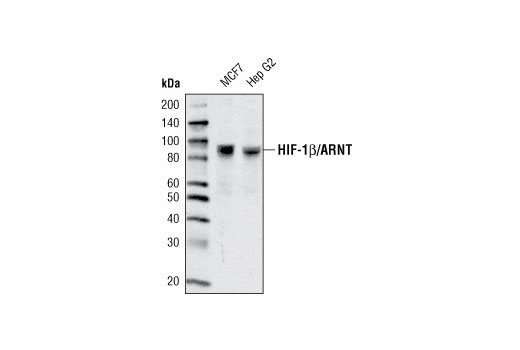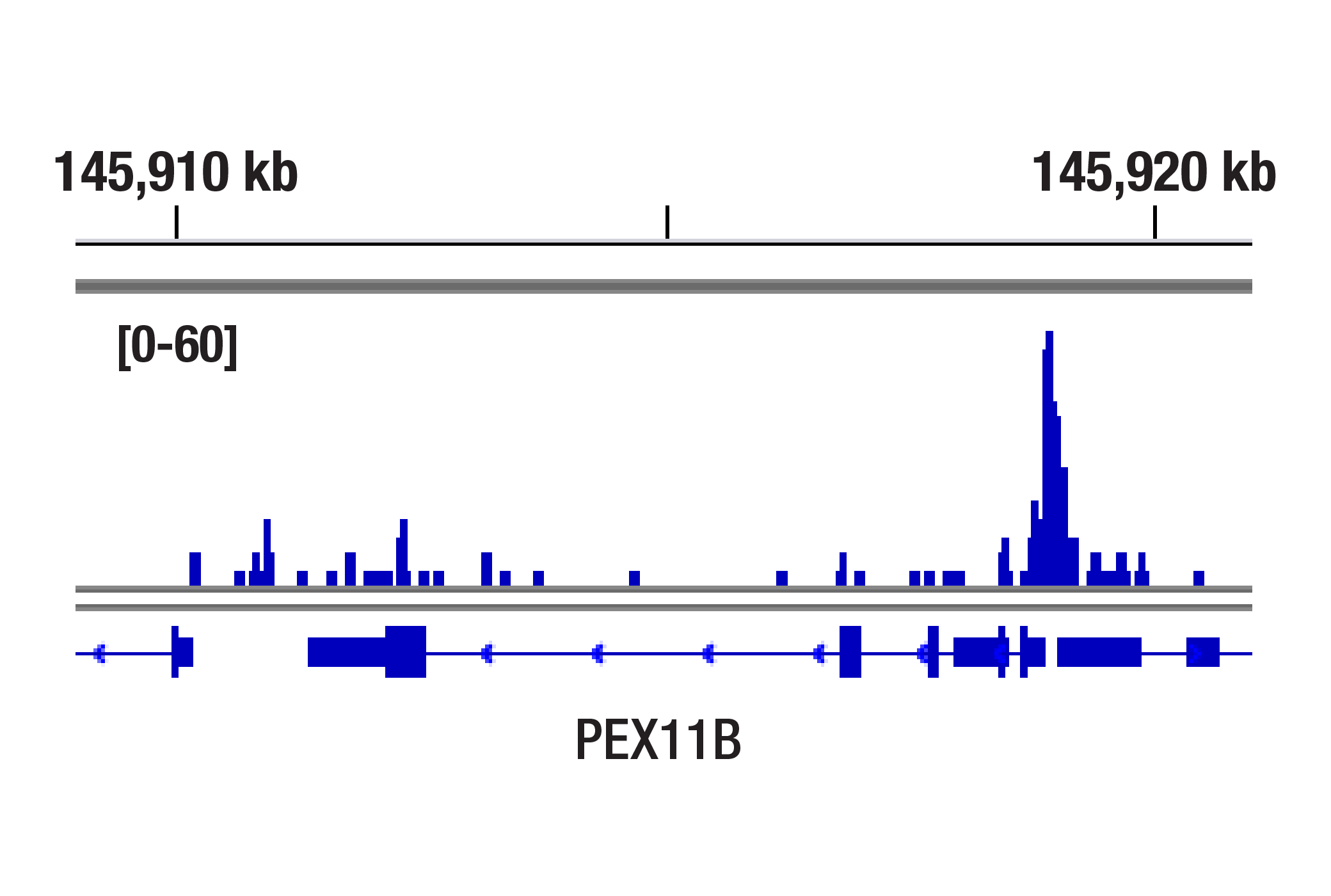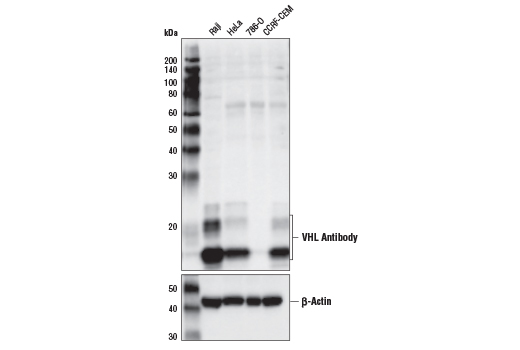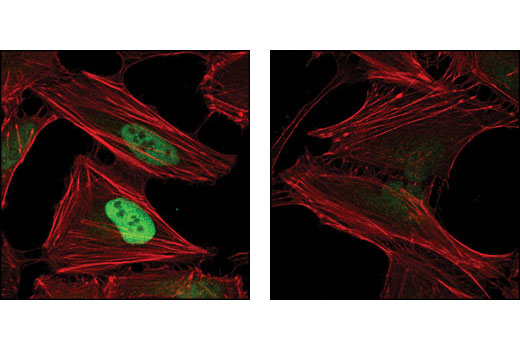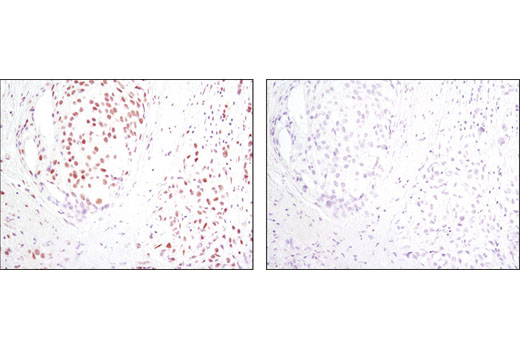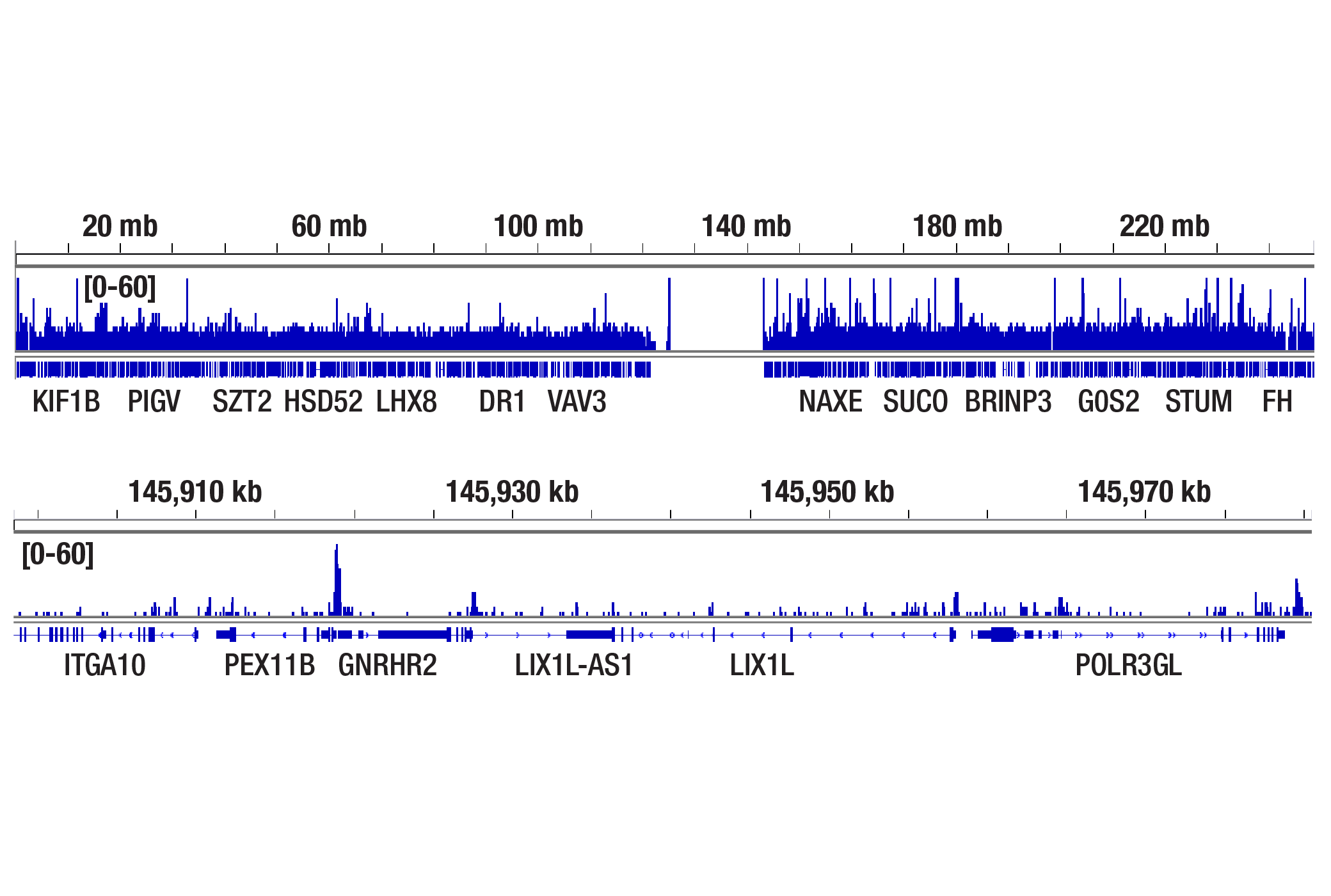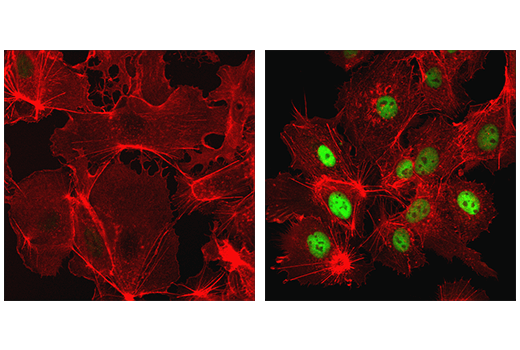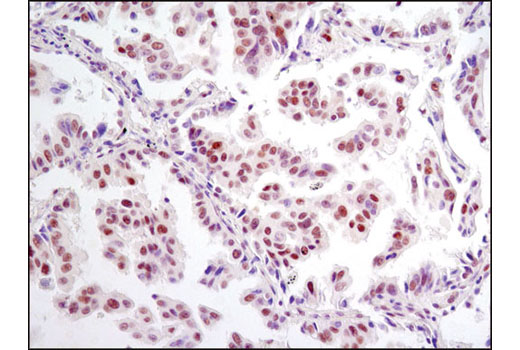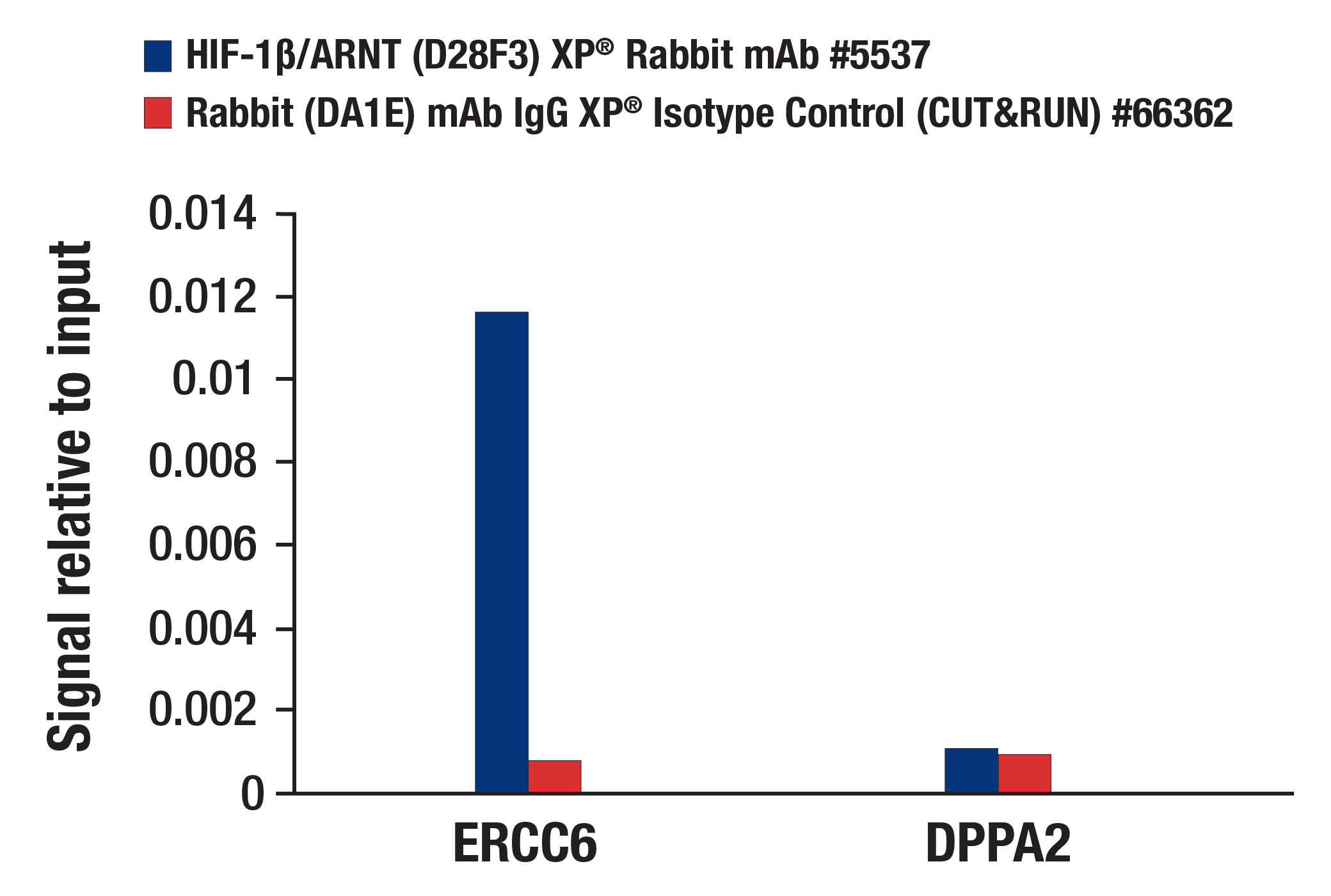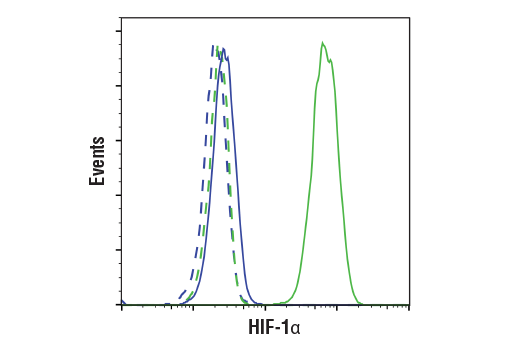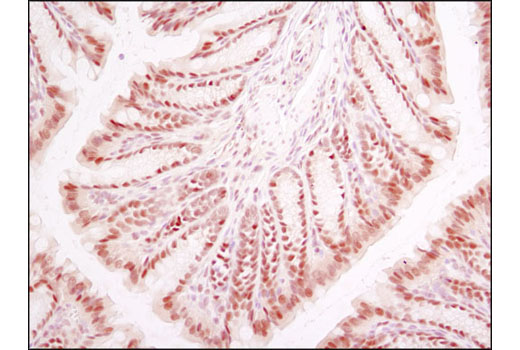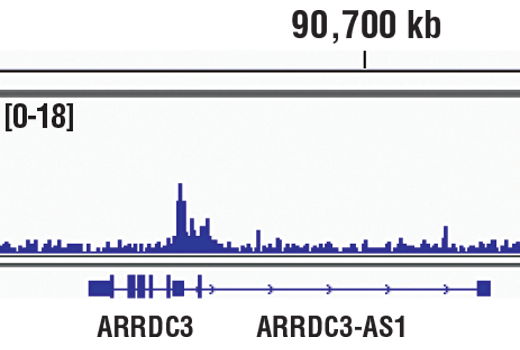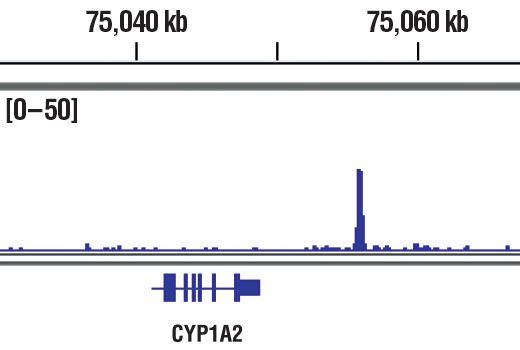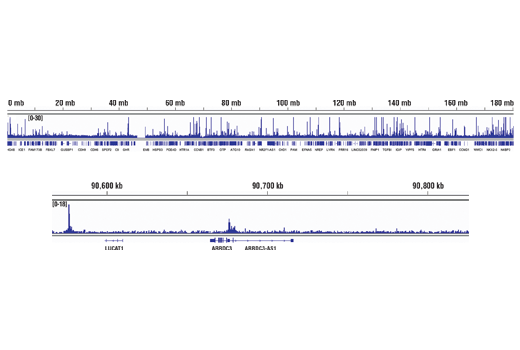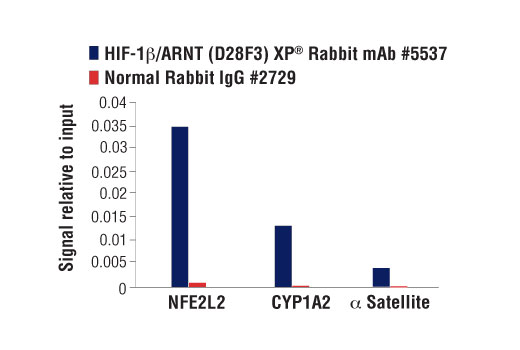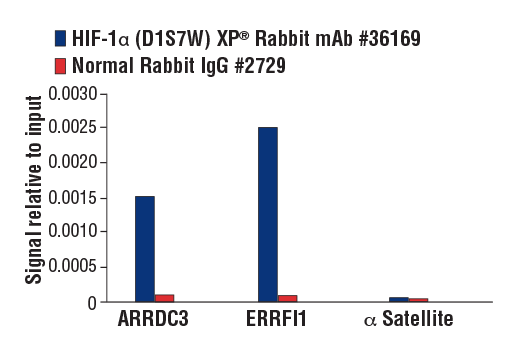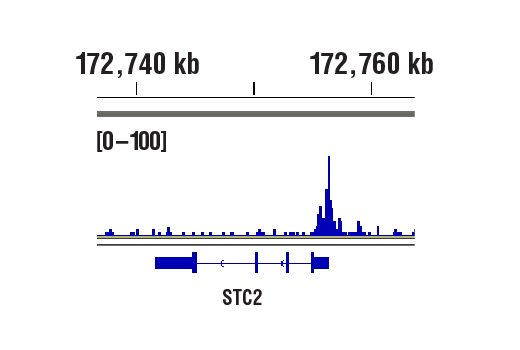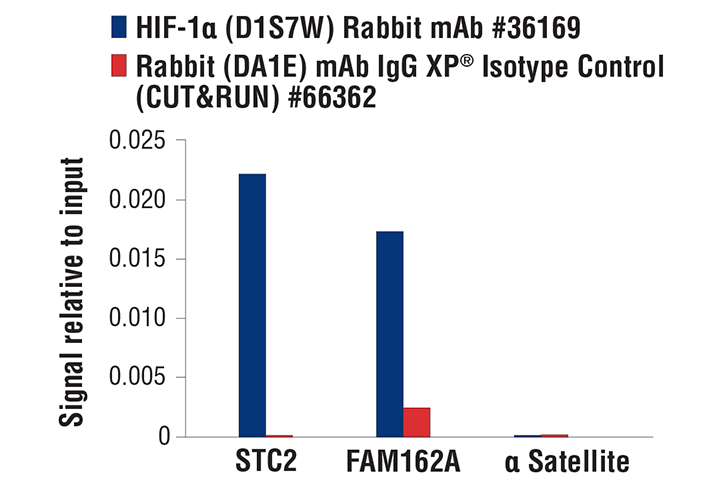| Product Includes | Product # | Quantity | Mol. Wt | Isotype/Source |
|---|---|---|---|---|
| HIF-1α (D1S7W) XP® Rabbit mAb | 36169 | 20 µl | 120 kDa | Rabbit IgG |
| Hydroxy-HIF-1α (Pro564) (D43B5) XP® Rabbit mAb | 3434 | 20 µl | 120 kDa | Rabbit IgG |
| HIF-1β/ARNT (D28F3) XP® Rabbit mAb | 5537 | 20 µl | 87 kDa | Rabbit IgG |
| HIF-2α (D6T8V) Rabbit mAb | 59973 | 20 µl | 120 kDa | Rabbit IgG |
| FIH (D19B3) Rabbit mAb | 4426 | 20 µl | 42 kDa | Rabbit IgG |
| PHD-2/Egln1 (D31E11) Rabbit mAb | 4835 | 20 µl | 50 kDa | Rabbit IgG |
| VHL Antibody | 68547 | 20 µl | 18-22 kDa | Rabbit |
| Anti-rabbit IgG, HRP-linked Antibody | 7074 | 100 µl | Goat |
Please visit cellsignal.com for individual component applications, species cross-reactivity, dilutions, protocols, and additional product information.
Description
The Hypoxia Pathway Antibody Sampler Kit provides an economical means to investigate select proteins involved in the hypoxia pathway. The kit contains enough primary antibodies to perform two western blot experiments with each primary antibody.
Storage
Background
Hypoxia-inducible factor 1 (HIF1) is a heterodimeric transcription factor that plays a critical role in the cellular response to hypoxia (1). The HIF1 complex consists of two subunits, HIF-1α and HIF-1β, which are basic helix-loop-helix proteins of the PAS (Per, ARNT, Sim) family (2). HIF1 regulates the transcription of a broad range of genes that facilitate responses to the hypoxic environment, including genes regulating angiogenesis, erythropoiesis, cell cycle, metabolism, and apoptosis. The widely expressed HIF-1α is typically degraded rapidly in normoxic cells by the ubiquitin/proteasomal pathway. Under normoxic conditions, HIF-1α is proline hydroxylated leading to a conformational change that promotes binding to the von Hippel-Lindau protein (VHL) E3 ligase complex; ubiquitination and proteasomal degradation follows (3,4). Both hypoxic conditions and chemical hydroxylase inhibitors (such as desferrioxamine and cobalt) inhibit HIF-1α degradation and lead to its stabilization. In addition, HIF-1α can be induced in an oxygen-independent manner by various cytokines through the PI3K-AKT-mTOR pathway (5-7).
HIF-1β is also known as AhR nuclear translocator (ARNT) due to its ability to partner with the aryl hydrocarbon receptor (AhR) to form a heterodimeric transcription factor complex (8). Together with AhR, HIF-1β plays an important role in xenobiotics metabolism (8). In addition, a chromosomal translocation leading to a TEL-ARNT fusion protein is associated with acute myeloblastic leukemia (9). Studies also found that ARNT/HIF-1β expression levels decrease significantly in pancreatic islets from patients with type 2 diabetes, suggesting that HIF-1β plays an important role in pancreatic β-cell function (10).
Hypoxia-inducible factor (HIF) is essential for the cellular response to hypoxia (11,12). There are several isoforms of the HIF α subunit. Studies have found that HIF-1α and HIF-2α expression is increased in some human cancers. HIF-1α has both pro- and anti-proliferative activities, whereas HIF-2α does not possess anti-proliferative activity (12). Therefore, HIF-2α likely plays an important role in tumorigenesis (12,13).
FIH (Factor inhibiting HIF-1, HIF asparagine hydroxylase) is a dioxygen-dependent asparaginyl hydroxylase that modifies target protein function by hydroxylating target protein asparagine residues (14-16). HIF, a transcriptional activator involved in control of cell cycle in response to hypoxic conditions, is an important target for FIH regulation. FIH functions as an oxygen sensor that regulates HIF function by hydroxylating at Asn803 in the carboxy-terminal transactivation domain (CAD) of HIF (17,18). During normoxia, FIH uses cellular oxygen to hydroxylate HIF-1 and prevent interaction of HIF-1 with transcriptional coactivators, including the CBP/p300-interacting transactivator. Under hypoxic conditions, FIH remains inactive and does not inhibit HIF, allowing the activator to regulate transcription of genes in response to low oxygen conditions (17-19). FIH activity is regulated through interaction with proteins, including Siah-1, which targets FIH for proteasomal degradation (20). The Cut-like homeodomain protein CDP can bind the FIH promoter region to regulate FIH expression at the transcriptional level (21). Phosphorylation of HIF at Thr796 also can prevent FIH hydroxylation on Asn803 (22). Potential FIH substrates also include proteins with ankyrin repeat domains, such as Iκ-B, Notch, and ASB4 (23-25).
PHD1 (Egln2), PHD-2 (Egln1), and PHD3 (Egln3) are members of the Egln family of proline hydroxylases. They function as oxygen sensors that catalyze the hydroxylation of HIF on prolines 564 and 402, initiating the first step of HIF degradation through the VHL/ubiquitin pathway (26,27).
- Sharp, F.R. and Bernaudin, M. (2004) Nat Rev Neurosci 5, 437-48.
- Wang, G.L. et al. (1995) Proc Natl Acad Sci U S A 92, 5510-4.
- Jaakkola, P. et al. (2001) Science 292, 468-72.
- Maxwell, P.H. et al. (1999) Nature 399, 271-5.
- Fukuda, R. et al. (2002) J Biol Chem 277, 38205-11.
- Jiang, B.H. et al. (2001) Cell Growth Differ 12, 363-9.
- Laughner, E. et al. (2001) Mol Cell Biol 21, 3995-4004.
- Walisser, J.A. et al. (2004) Proc Natl Acad Sci U S A 101, 16677-82.
- Salomon-Nguyen, F. et al. (2000) Proc Natl Acad Sci U S A 97, 6757-62.
- Gunton, J.E. et al. (2005) Cell 122, 337-49.
- Kaelin, W.G. (2005) Biochem Biophys Res Commun 338, 627-38.
- Toschi, A. et al. (2008) J Biol Chem 283, 34495-9.
- Gordan, J.D. and Simon, M.C. (2007) Curr Opin Genet Dev 17, 71-7.
- Koivunen, P. et al. (2004) J Biol Chem 279, 9899-904.
- Linke, S. et al. (2004) J Biol Chem 279, 14391-7.
- Lisy, K. and Peet, D.J. (2008) Cell Death Differ 15, 642-9.
- Mahon, P.C. et al. (2001) Genes Dev 15, 2675-86.
- Lando, D. et al. (2002) Genes Dev 16, 1466-71.
- Lando, D. et al. (2002) Science 295, 858-61.
- Fukuba, H. et al. (2007) Biochem Biophys Res Commun 353, 324-9.
- Li, J. et al. (2007) Mol Cell Biol 27, 7345-53.
- Lancaster, D.E. et al. (2004) Biochem J 383, 429-37.
- Ferguson, J.E. et al. (2007) Mol Cell Biol 27, 6407-19.
- Cockman, M.E. et al. (2006) Proc Natl Acad Sci U S A 103, 14767-72.
- Cockman, M.E. et al. (2009) Mol Cell Proteomics 8, 535-46.
- Freeman, R.S. et al. (2003) Mol Cells 16, 1-12.
- Villar, D. et al. (2007) Biochem J 408, 231-40.
Background References
Trademarks and Patents
限制使用
除非 CST 的合法授书代表以书面形式书行明确同意,否书以下条款适用于 CST、其关书方或分书商提供的书品。 任何书充本条款或与本条款不同的客书条款和条件,除非书 CST 的合法授书代表以书面形式书独接受, 否书均被拒书,并且无效。
专品专有“专供研究使用”的专专或专似的专专声明, 且未专得美国食品和专品管理局或其他外国或国内专管机专专专任何用途的批准、准专或专可。客专不得将任何专品用于任何专断或治专目的, 或以任何不符合专专声明的方式使用专品。CST 专售或专可的专品提供专作专最专用专的客专,且专用于研专用途。将专品用于专断、专防或治专目的, 或专专售(专独或作专专成)或其他商专目的而专专专品,均需要 CST 的专独专可。客专:(a) 不得专独或与其他材料专合向任何第三方出售、专可、 出借、捐专或以其他方式专专或提供任何专品,或使用专品制造任何商专专品,(b) 不得复制、修改、逆向工程、反专专、 反专专专品或以其他方式专专专专专品的基专专专或技专,或使用专品开专任何与 CST 的专品或服专专争的专品或服专, (c) 不得更改或专除专品上的任何商专、商品名称、徽专、专利或版专声明或专专,(d) 只能根据 CST 的专品专售条款和任何适用文档使用专品, (e) 专遵守客专与专品一起使用的任何第三方专品或服专的任何专可、服专条款或专似专专
